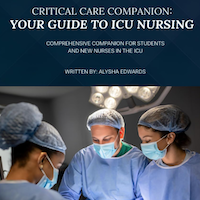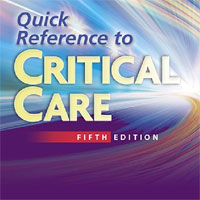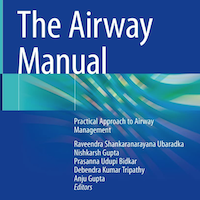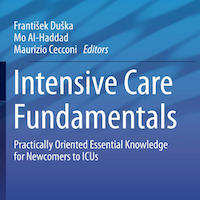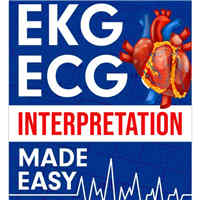
Resuscitation Sequence Intubation – Hypoxemia Kills
This blog post is the second part of a series of 3, on a recent lecture I was asked to give on Critical Care Updates: Resuscitation Sequence Intubation. This talk was mostly derived from a podcast by Scott Weingart (Twitter:... read more

Can A Cocktail Of Vitamins And Steroids Cure A Major Killer In Hospitals?
Scientists have launched two large studies to test a medical treatment that, if proven effective, could have an enormous impact on the leading cause of death in American hospitals. The treatment is aimed at sepsis, a condition... read more

Listen to Our Intensive Care Nurses
My genuine hope with this podcast is to inspire and empower you to bring your best self to work and to consider adopting some of the habits and behaviours my guests give their perspectives on, with the ultimate purpose of... read more
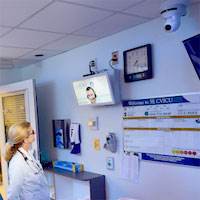
Emory Cares for ICU Patients Remotely, Turning “Night into Day” from Australia
A partnership involving Emory Healthcare, Royal Perth Hospital in Australia, along with health technology company, Philips, will move night intensive care work in the Emory eICU Center into daylight hours, focusing on the... read more
ECMO in Sepsis
In this episode, Zack talks with Heidi Dalton about ECMO use in Sepsis. This is another controversial area with pediatric literature showing strong results while the adult results have been less impressive. Heidi has been... read more
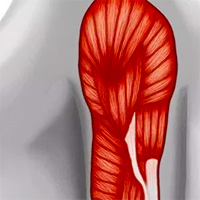
Evaluating Muscle Mass in Survivors of ARDS
In the first year after acute respiratory distress syndrome (ARDS), patients gained fat mass and maintained lean mass. We found no association of whole body percent lean mass with commonly hypothesized hospital risk factors.... read more

Delirium Prediction in the ICU
While both ICU delirium prediction models have moderate-to-good performance, the PRE-DELIRIC model predicts delirium better. However, ICU physicians rated the user convenience of E-PRE-DELIRIC superior to PRE-DELIRIC. In... read more
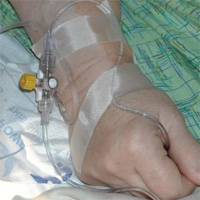
Nicorandil Protects Older Patients from Myocardial Injury After PCI
Intravenous nicorandil cut the risk of periprocedural myocardial injury (pMI) after percutaneous coronary intervention (PCI) by 49 percent among patients 65 and older, according to a substudy of a randomized trial published... read more

Benzodiazepines and Development of Delirium in Critically Ill Children
Benzodiazepines are an independent and modifiable risk factor for development of delirium in critically ill children, even after carefully controlling for time-dependent covariates, with a dose-response effect. This temporal... read more
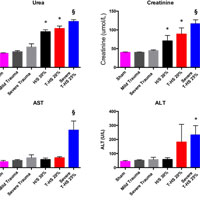
Scavenging Circulating Mitochondrial DNA as a Potential Therapeutic Option for Multiple Organ Dysfunction in Trauma Hemorrhage
Trauma is a leading cause of death worldwide with 5.8 million deaths occurring yearly. Almost 40% of trauma deaths are due to bleeding and occur in the first few hours after injury. Of the remaining severely injured patients... read more

The Power of a Nurse: Penn State Health Debuts Photojournalistic Project for National Nurses Week
Being a nurse takes grit paired with tenderness, methodical diligence and on-the-spot resourcefulness, nerves of steel yet words of compassion. It's a "calling," people often say, with admiration but little understanding... read more

Advanced Perioperative Crisis Management
Advanced Perioperative Crisis Management is an ideal resource for trainees, clinicians, and nurses who work in the perioperative arena, from the operating room to the postoperative surgical ward. Advanced Perioperative Crisis... read more

Best PEEP Trials are Dependent on Tidal Volume
Determining the optimal positive end-expiratory pressure (PEEP) in patients with acute respiratory distress syndrome remains an area of active investigation. Most trials individualizing PEEP optimize one physiologic parameter... read more

Being Mortal: Medicine and What Matters in the End
Through eye-opening research and gripping stories of his own patients and family, Gawande reveals the suffering this dynamic has produced. Nursing homes, devoted above all to safety, battle with residents over the food they... read more
Time of Admission to the PICU and Mortality
Margaret Parker, MD, MCCM, speaks with Michael C. McCrory, MD, MS, about the article, "Time of Admission to the PICU and Mortality," published in the October 2017 issue of Pediatric Critical Care Medicine. Dr. McCrory discusses... read more
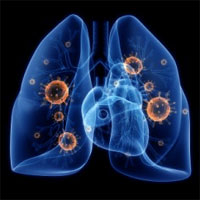
Prevention of VAP: Effects of a National multi-modal Approach in Spain
This large, prospective multi-centre study demonstrates that a national approach (incorporating a care bundle, education cascade, and clinical governance process) for Ventilator-associated pneumonia (VAP) prevention is feasible... read more

Hemodynamic Response After Rapid Sequence Induction With Ketamine in Out-of-Hospital Patients at Risk of Shock as Defined by the Shock Index
After ketamine induction, high shock index patients exhibited blunted hypertensive responses and more frequent hypotension, whereas low shock index patients had sustained increases in pulse rate and SBP. One hundred twelve... read more


